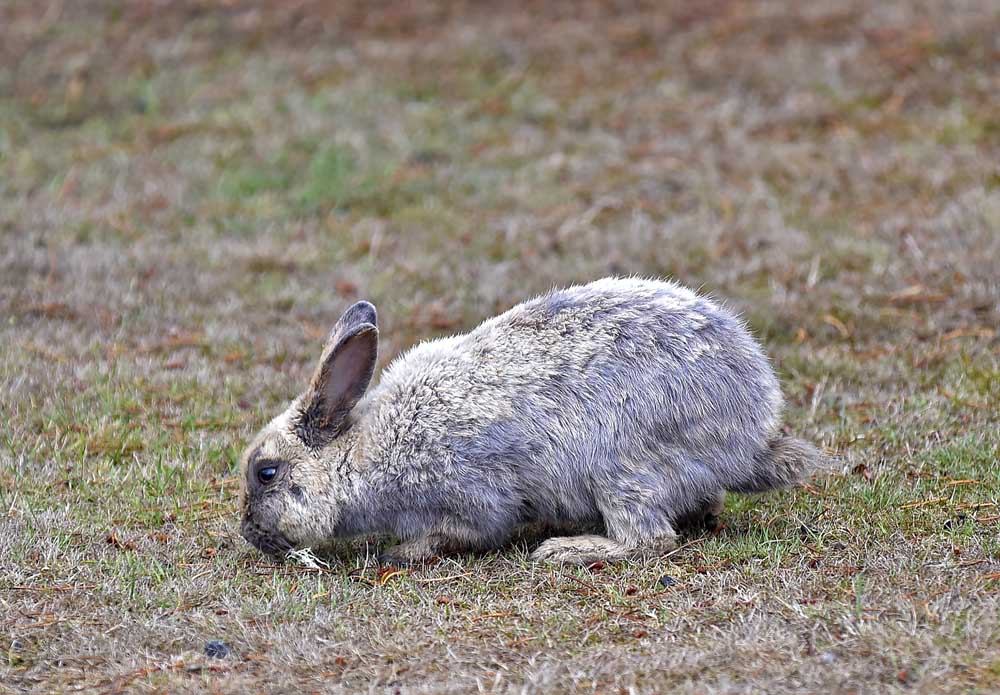No easy solution for Cannon Beach bunnies
Published 8:00 pm Thursday, October 18, 2018

- One of the rabbits feeds on grass in a resident's yard.
CANNON BEACH — Curbing a growing bunny population may be more complicated than city officials anticipated.
Trending
Last month, residents in Tolovana asked the city to address a bunny infestation they claim is destroying gardens and blanketing yards with thick layers of rabbit pellets.
Since then, the city has researched ways to possibly handle the population, but has found the fluffy “Tolovana bunnies” appear to slip between the cracks of almost every state and local agency.
“Nobody is in charge of bunnies,” City Manager Bruce St. Denis said.
Trending
Because they are feral, the bunnies have no classifications or protections under the Oregon Department of Fish and Wildlife, spokeswoman Michelle Dennehy said. They aren’t considered livestock, so the Department of Agriculture doesn’t claim them, either.
“If they were brush rabbits, ODFW would be involved,” St. Denis said.
It was against fish and wildlife’s code for the bunnies to be released into the wild, Dennehy said, and so there is no place the city can legally relocate them.
Another solution could be trapping them and bringing them to refuges like the Oregon Humane Society, St. Denis said. But local animal control only serves cats, dogs and limited livestock in unincorporated Clatsop County.
The humane society accepts rabbits, but only if they are surrendered by owners. The organization doesn’t accept strays — which is what the Tolovana bunnies would be considered — and the group already has a monthslong waiting list, humane society public information manager Laura Klink said.
Rabbit rescues like Rabbit Advocates in the Portland area have been inundated for years, said Mary Huey, the group’s founder. A few shelters, like Multnomah County Animal Services, can accept a large quantity of stray animals. But at most, the demand of people trying to offload unwanted bunnies consistently outpaces the number of homes willing to take them.
“The community is going to have to get together and realize it’s going to either stay the same or going to get worse if they don’t do anything … And as a community step up and find homes for these rabbits,” Huey said.
The situation leaves the city with few options.
“The options are to kill them or to trap them … And then kill them,” St. Denis said.
The City Council did not appear fond of either choice.
“I would love to see how the (Chamber of Commerce) would deal with the image of Cannon Beach: Bunny killing capital of the world,” City Councilor Mike Benefield said.
City councilors did discuss some local measures, like encouraging homeowners to do their own trapping and requiring residents to keep bunnies in hatches like they do chickens if they want to keep them around.
Mayor Sam Steidel suggested looking into a ban on feeding wildlife, since many neighbors believe the problem is escalating because of some residents and tourists intentionally feeding the bunnies.
But City Councilor George Vetter argued that even without the extra treats, there is enough natural foliage to support a robust bunny population.
“There is plenty of grass for them to eat, so I don’t think having any control over people feeding them will affect the numbers,” he said.
For now, the city will continue researching and is open to ideas from the public.
If nothing else, St. Denis thinks Mother Nature will help at least until next spring.
“I think the winter will do a lot of the work for us,” he said.









